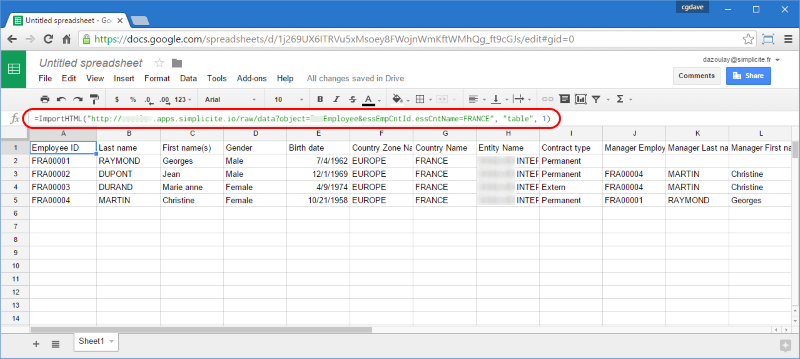RAW services
Introduction
This document describes how raw data services are working.
These generic raw data services should only be used on the API endpoint.
The authentication mechanisms available on this API endpoint are described in this document
the credentials that needs to be passed to the calls are noted <credentials>.
Never use the public UI endpoint instead of the API endpoint: the public UI endpoint is a stateful UI endpoint that is only supposed to be used by the non authenticated pages of the generic UI. It does not have the scalability and performance of the API endpoint. In other word using the public UI endpoint for services purposes is an absolute anti-pattern.
The calls examples are given using the curl command line tool
(that can easily be transposed to any HTTP client tool or API).
In legacy versions 3.x the -b cookies.txt -c cookies.txt parameters of the curl calls below are required
as they allow to re-use the same server session (identified by the JSESSIONID cookie).
In versions 4.0+ a technical session is used to avoid taking care of the session cookie.
For an application deployed on /myapp, the base URL of the raw data services endpoint is:
http[s]://<host[:<port>]>/myapp/api/raw
Please refer to this document for details on the authentication mechanisms.
It will be noted <base URL> in the rest of the document.
In production the services endpoint's URL should be restricted only to allowed origins e.g. using URL filtering based on request's origin IP address or similar approaches.
Scalability and performances
For optimal performances under high concurrent volume it may be useful to enable
the API pooling by setting the USE_WEBSERVICES_OBJECTPOOL to yes, especially
when using a single user (e.g. calls from a "public" frontend).
This allow calls to the services to be processed by a per-user pool of business objects.
The pool size can be adjusted/limied using the WEBSERVICES_OBJECTPOOL_MAXPEROBJECT
and WEBSERVICES_OBJECTPOOL_MAXTOTAL system parameters.
Data services
Business object service
The object raw data service returns the rows of a business object as a plain HTML table. The values are formatted using the user's locale settings (dates, floats, ...) and the field labels are returned in the user's language.
To get data from the SystemParam business object the call is:
curl -u <login>[:<password>] "<base URL>/data?object=SystemParam"
List of values service
The list of values raw data service returns the code and values of a list of values as a plain HTML table. The values are returned using the user's language.
To get data from the LANG list of values the call is:
curl -u <login>[:<password>] "<base URL>/data?lov=LANG"
Usage in Microsoft Excel®
Typical usage of raw data services is to configure traditional external datasources in Microsoft Excel®.
In recent Excel versions (Office 2016+) a much better approach is to use the PowerQuery tool (which is now provided by default with Excel) and the REST services. See dedicated section in this document for details.
Usage in Google Spreadsheets®
Another possible usage of raw data services is to configure external datasources in Google Spreadsheetsl®.
Note that only public data can be loaded (unless your application uses the same Google OAuth2 authentication than the spreadsheet).
To do so create a formula like: =ImportHTML("<base URL>/raw/data?object=<object name>[&
